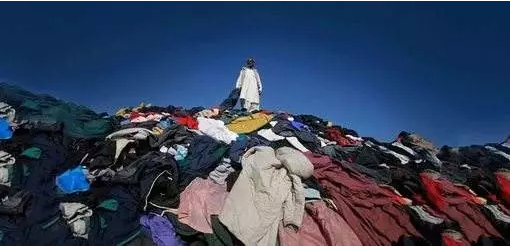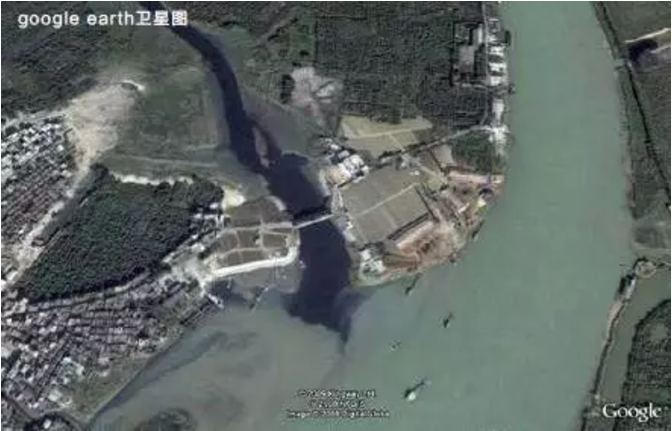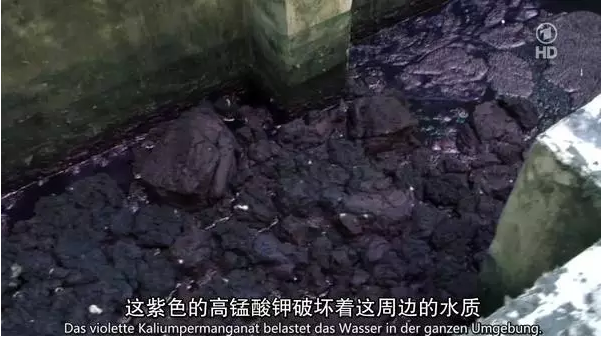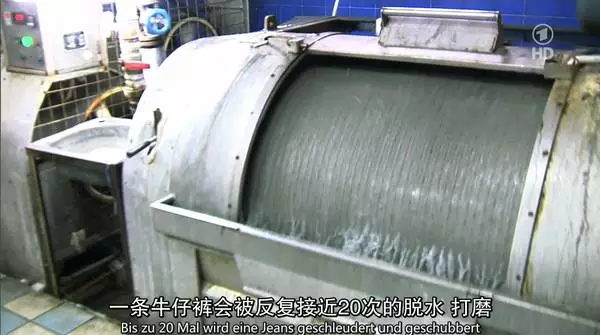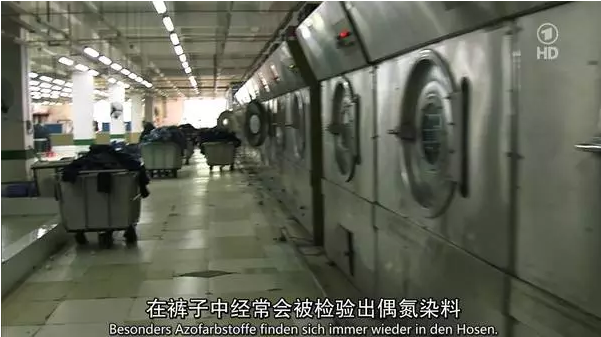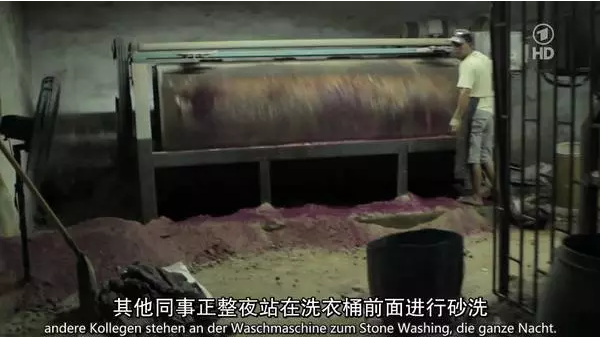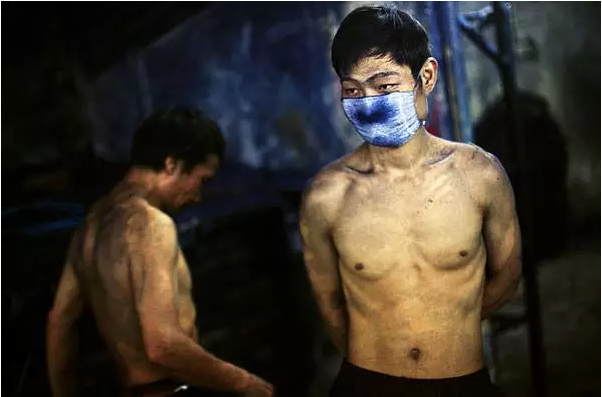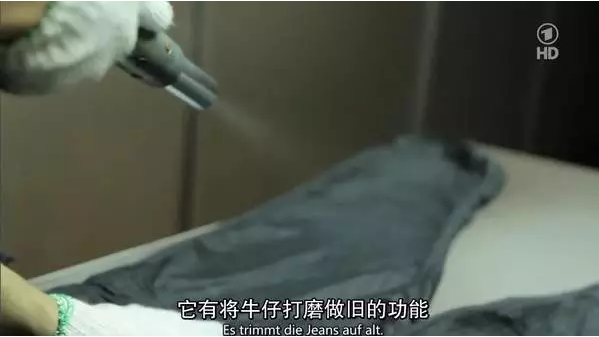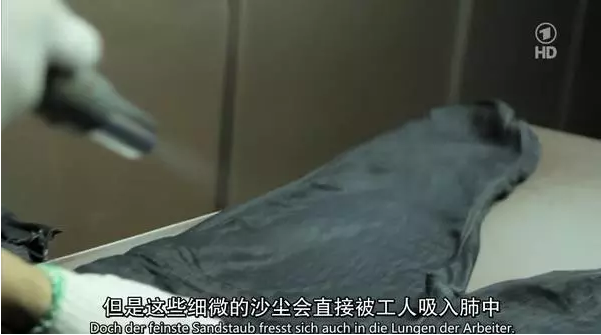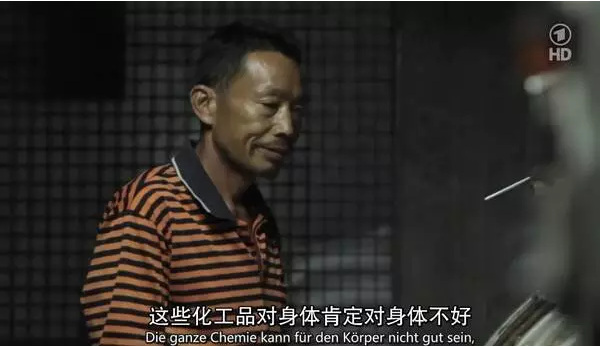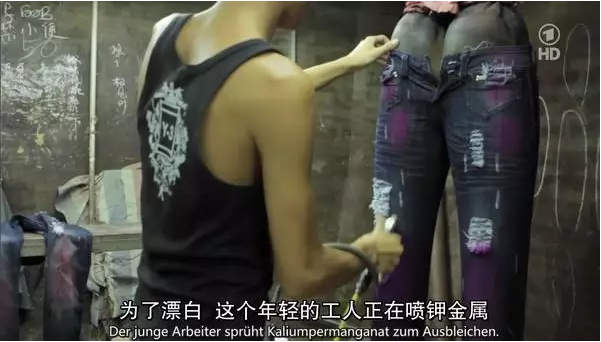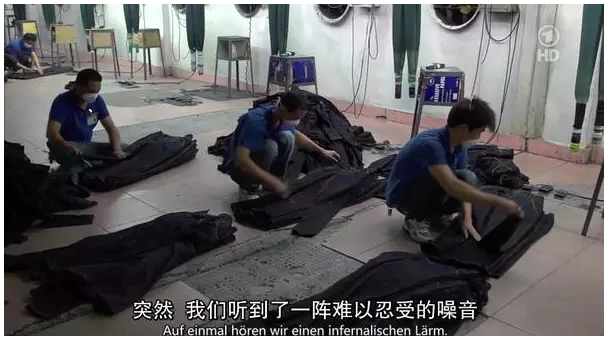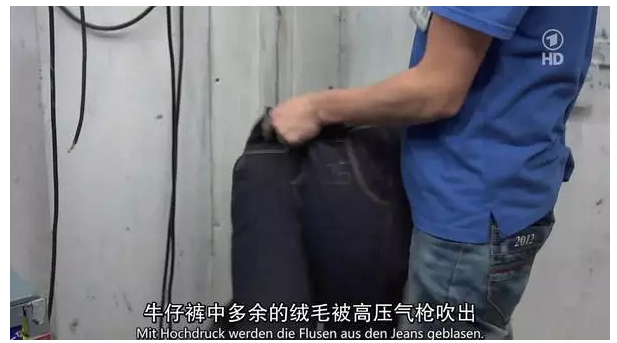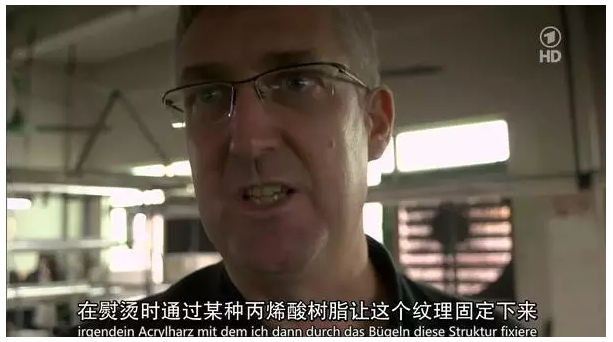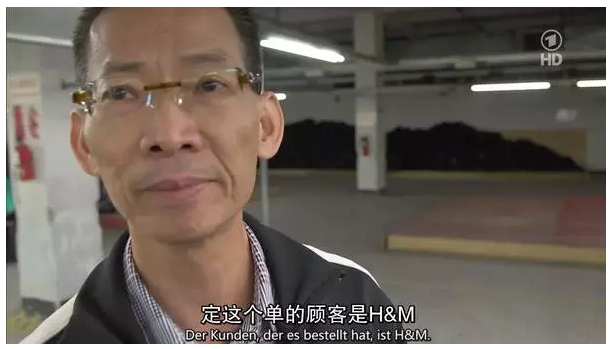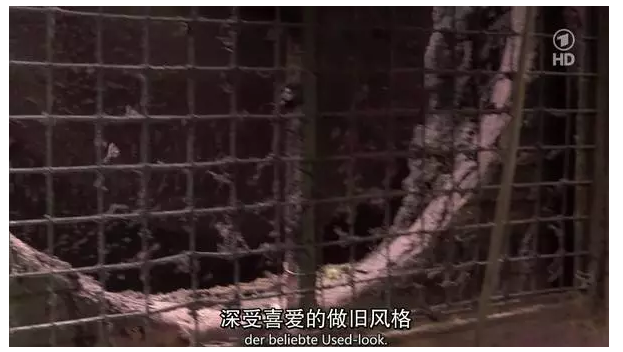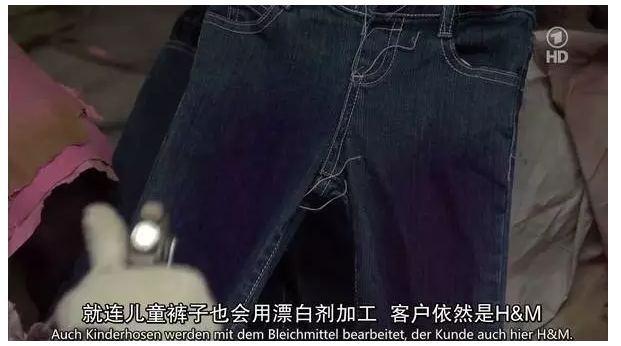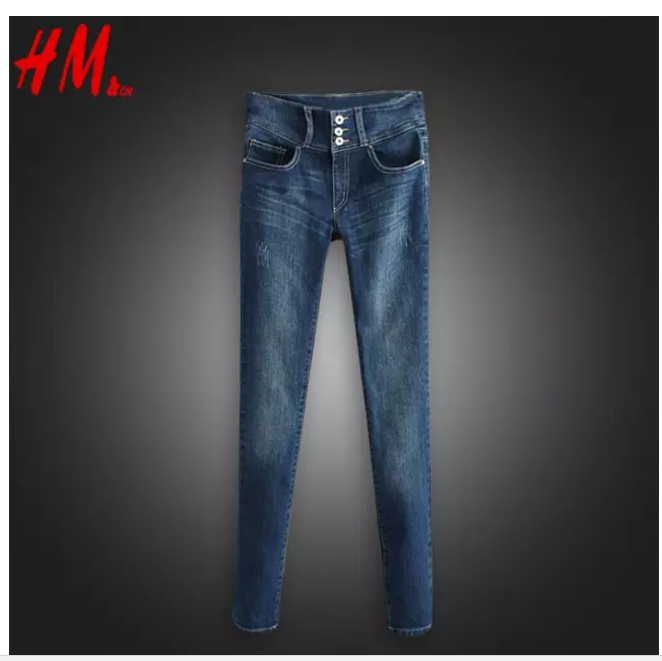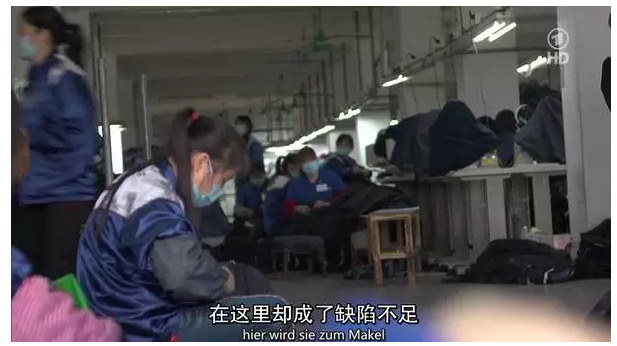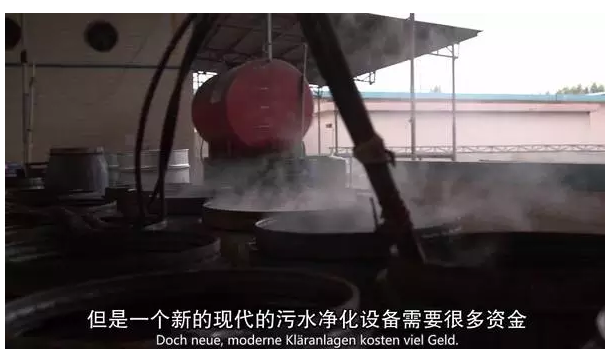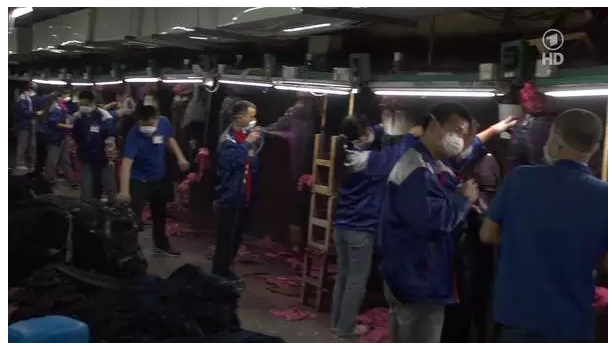Wen | li xiaoyu zhihu column |
Source | (ID: fashion3chaser)
What's the price of every pair of jeans that are stacked on the shelf? Have you ever thought about it before? How much did nature and humanity pay for these cheap goods? How big is the butterfly effect caused by a pair of jeans?
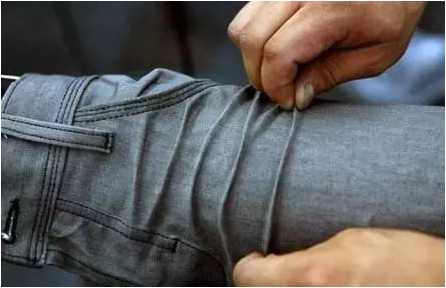
If you're talking about one of the most popular items in fashion, I think they're not jeans. Jeans have gone far beyond the “ the category "fashion &rdquo" has become the most common basic type of wardrobe; it may be the only fashion item that breaks down barriers.
People can according to their spending power, in the first-line big brands, light luxury brands, fast fashion brand stores, supermarket chains, wholesale markets, and even night markets, roadside stalls, buy different price jeans. The one thousand dollar jeans and the $ninety-nine jeans don't make much difference in appearance, wash, cut, break, &hellip, … the most popular fashion factors, all of them.
Another thing in common is that both expensive and cheap jeans mean evil.
When you go into a fast fashion brand store racket, greets you often piled high on the shelves of the jeans, different shades of blue look so fascinating, blue, this is a pleasant relief color. But when you read this article, I'm afraid these blue will not let you calm you see again.
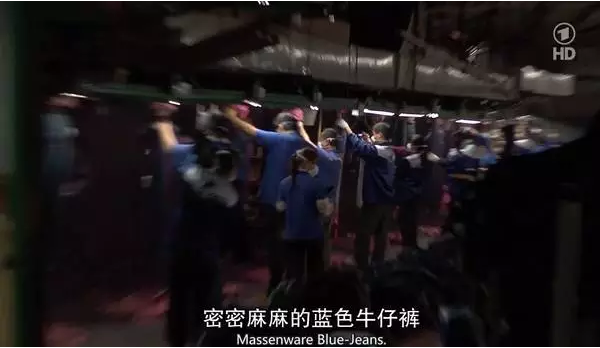
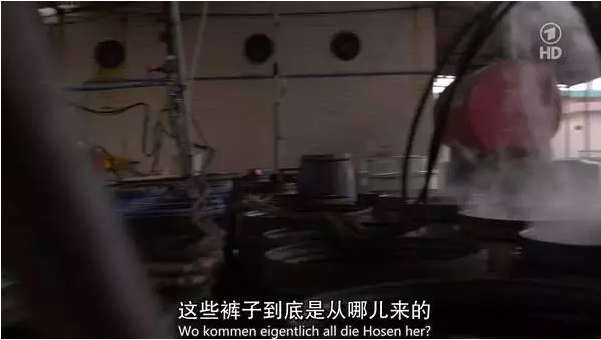
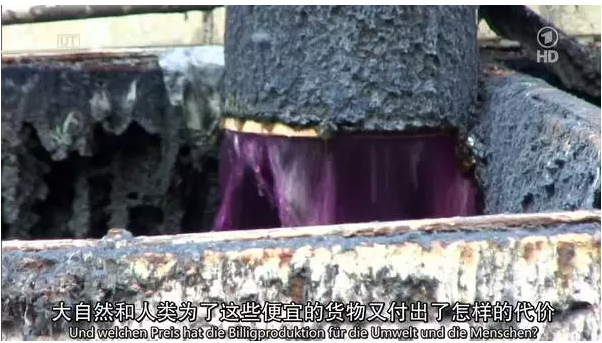
With these questions, they began to trace its history from the German brand Kik stores a 9.9 Euro jeans, found this pair of jeans is the birth place of — — China · Guangdong · Guangzhou · Xintang.
Everything seen in the small town where 260 million jeans are produced each year has revolutionized their knowledge of jeans and the fashion industry. Eventually, they edited the story into a 45 minute documentary called "the price of jeans".
This film looks too good, good to make people feel afraid, we can because of their ignorance of peace of mind, so many times, we would rather not wake us, let us see the truth.
I will follow my summary ideas to introduce the film, not to strictly follow the film's narrative order, hope that more people can read my introduction to see it completely:
0.1
A pair of jeans =3480 litres of water
One side is wasting, one side is polluting

(graph: Greenpeace Qiu Bo)
The effluent from a cowboy washing house in Xintang Town, which has no treatment, is directly discharged into a river that meanders around the village, which eventually flows to the Dongjiang river.
Time magazine reported in the United States, the United States in 2007 made a certain brand of jeans on the resources required for a jeans conducted an assessment of the results obtained a startling discovery, jeans are made of water, almost from cotton to cotton to the washing machine, a pair of jeans life actually requires 3480 litres of water, if the adults need to eat every day two litres of water, the water consumption of a pair of jeans is enough to meet an adult close to five years of water quantity.
Maybe you'll retort that cotton isn't just for jeans. If the jeans cost so much water, aren't the other cotton products nearly the same?
No, you're wrong, much worse, because other cotton products are not like jeans, and you need a lot of chemicals to do the old wash. If you don't know what a do old washed, this jeans below, near the knee faded, big legs fold, there are some worn out part of the design, are artificially created deliberately "do old" effect.

Acrylic resin, adhesives, bleaching powder, phenolic compounds, carbon compounds, hypochlorite, potassium metal, azo dye, potassium permanganate, chromium and cadmium on or don't have to wait for you name of the raw materials of heavy metals are necessities of make jeans "fashion".
For every ton of jeans produced, 200 tons of water will be polluted, and the idea is that every kilogram of jeans, or three pairs of jeans, will require 200 litres of water. About 2,500 chemicals are used in dyeing and finishing of different denim products.
Xintang town denim textile clothing business began in 1980s, the village of London is one of the earliest collection of a group of jeans manufacturing village. On the satellite map, you can clearly see a river near the village of London, in the mouth of the river flowing into the East River, the black river and the light water contrast sharply.
The villagers reflected that when the sewage was serious, the river here was no longer sewage, but poisonous water. The smell is foul smelling, and if you don't touch it, the skin itches and even fester.
In order to reach the standard of quality inspection export, jeans plant health through repeated washing to the chamber of Commerce in Europe and the United States customers not aware of the presence of chemicals, a pair of jeans factory after repeated 20 times and then dehydrated grinding, frayed, bleaching, re color. In order to wash as clean as possible, a large amount of surfactant is added to the water. After the sewage basically without any treatment, it was directly discharged into the ditch, and eventually into the Pearl River.
However, this washing was just a formality, let &ldquo &rdquo jeans; smell; not so pungent, actually harm to humans is not significantly reduced, when the skin sweat, hide in these jeans of toxic carcinogenic substances will be released in direct contact with your skin. After wasting and polluting so much water, it's just a self deceiving effect. I really don't know whether to laugh or cry.
0.2
The illegal mode of production behind jeans,
Sweatshops destroy not just the health of workers
Every link in the production of jeans, are people stop the machine stop, the workers take turns on the night and day.
After a busy night, a worker finally had a rest.
Sadly, the blue dust on their jeans is relentlessly attacking their lungs.
Working fifteen or six hours a day, a high intensity work with just one day off a month, is only the least damaging work done to the worker. While wearing, you may be exposed to carcinogens left on your jeans, and what about the workers who produce them?
They don't know, they just can't choose because of their livelihood. Sand blasting, for example, has been banned in the world as an illegal process for jeans, but can be blatantly carried out in Chinese factories.
Silicosis is said before silicosis, silicosis is a disease of pneumoconiosis, occupation is serious. The free silica dust deposits in the alveoli of the respiratory tract through the respiratory tract, affecting gas exchange, and finally, the human alveoli lose their function and the lung tissue is completely fibrotic. In the words of the people, the lungs become a lump in the soil.
Experts of the Ministry of health have told the lavage treatment of silicosis patients: the general anesthesia of patients, irrigation and flushing in the lungs, the water out of the washing is muddy, static for a period of time, the water will be divided into two layers of water and sediment. At present, there is no specific cure for silicosis in the world, suffering from silicosis is equal to the death penalty.
This looks like a 60 year old worker Hu Xinglei is just 40 years old, he used to do is blasting work, after he was coughing, he switched to the laundry work, wages lower than before a lot, but also had to endure high temperature and odor.
Some ignorant young people do not know what the present labor means for their future. This young man is like the jeans factory food, will be out in a few years, become injured all over the body debris, Hu Xinglei encounter, is their tomorrow.
This spray purple is very corrosive, however, the young workers at work do not wear a mask, because the ventilation is not good, sultry scary in the workshop, the workers had to wear very little, and has no time to consider whether the chemical raw materials will stick to his body.
Compared with fatal silicosis, other dust, noise pollution, light seems to be not worth mentioning.
0.3
The cost price of 4.3 Euro jeans, carrying a lot
I have repeatedly ridiculed the fast fashion brands headed by H&, M and ZARA because they are responsible for the sins of jeans. Their business strategy is to use low quality and low price has followed the trend of the clothing to stimulate consumer desire to buy.
If the price of a pair of jeans is 200 euros, the middle and lower classes may buy only one item a year and will wear it for at least five years.
But people can now buy 9.9 Euro jeans in stores such as H&, M, WAL-MART, and so on, even migrant workers can buy one or two clothes without pressure each month.
In Britain, people now have 4 times as many clothes as they did 30 years ago. Each person spends an average of 625 pounds a year buying clothes, buying 28 kilograms of new clothes a year, and spending 1 million 720 thousand tons of fashion products a year. It is worth noting that each year the same weight of clothes is thrown into the trash can, even though they are far awayIt's not old clothes.
Although China is a developing country, but I think the situation is similar, the price of clothes and more and more and more cheap and more convenient way of shopping is to encourage consumers to buy over the culprit, 9.9 Euro jeans is “ lipstick effect ” the best embodiment of today at this time.
As we all know, the lipstick effect is a barometer of economic development, also called “ low price preference trend ”, simply said, is under the economic recession, such as lipstick, perfume, jeans, this kind of movie tickets “ does not have small luxury goods &rdquo will become the consumer desire to export; is a large consumer, its sales is far too high to the good economic times.
Because people's spending power will be affected by the economic environment and decline, but people's desire to consume will not disappear with the decline in consumption capacity.
Can not afford to buy expensive, or buy a cheap, or that is how to meet their own.
This low price preference trend mentality, also applies to the current consumption ability is not strong, but the strong desire for consumption 90, fast fashion brand sales in jeans, and lattice shop outside the school ten dollars a bottle of nail polish, twenty dollars a lipstick, which can not only meet their desire for consumption, but also to meet their walking in the forefront of fashion fantasy.
Now the trend of public opinion is to laugh at the new rich class's mindless pursuit of luxury brands, think they are “ stupid money, ” and spend tens of thousands of dollars to buy a dress, a bag, it's really a waste of money.
But I want to tell you a cruel truth in today's society, the real waste is not the blind pursuit of high consumer groups Handmade luxury, is precisely the excessive consumption of low consumer groups on the crudely made fast fashion brand.
This is the rule of the jeans Market: people want cheap pants, but they don't want to wear them for long.
Because almost every week fast fashion brand will launch a new style to tell them this is the most popular now, they are going to buy a new as soon as possible, so new jeans have to look like the old, under the delusion of wave of pain is the people here and the natural environment.
H& and M stream sell their jeans so cheaply, not for charity. They give manufacturers prices,
and each pair of jeans is no more than 4.3 euros.
Excluding the production of raw materials, wages, rent, machine factory loss, all taxes and jeans, 4.3 euro also left much?
We can't stand talking to blame factory owners are in Europe and the United States black, buyers who believe that 4.3 euros to buy a poisonous chemical without the old jeans?
I am ten years old will not be so naive, I know to sell 10 Fen a sugar mouth to eat the tongue and mouth are stained red, and the sugar is bitter. The only thing you can pay for the idea of unlimited cost is quality. You want to buy a pair of jeans in 9.9 euro, and don't expect it to be a boutique. It's not trash, it's a harmful substance.
In fact, the factory owners of small factories also want to take out money to pay workers, improve their working environment and buy sewage treatment facilities. But they found that when they do this, will inevitably raise the cost of a single pair of jeans and buyer as a reason no matter how much you have, you as long as the price, they will quickly transfer orders to other, less environmental protection and humane factory, their reasons are very impressive: therefore they did not violate the laws and regulations of China, in Europe and the United States are not allowed to do, here is nobody's business.
The present situation of China's processing industry is that we may earn only 1% of the processing fee of a product, but it leaves 100% pollution on our territory.
The child passed through the effluent from a dyeing and finishing factory, and he knew nothing of the potential damage to the human health caused by the sewage he had gone through.
They want a price 4.3 Euro jeans, just as the jeans come from, they don't want to know, more do not want to manage. A second ago also said that the production environment is they absolutely can not tolerate the German manufacturers, after a second reporter asked to hear “ whether can pay a little money, but also to improve the workers earn more money under the &rdquo plant equipment; when he said: even if the runaway price is one thousand times the difference is made out of the pants. In the factory, but he does not think he gave money, factory owners will pay more to the workers.
0.4
What he said may be true,
Not to say Levi's, which sells for 100 euros
There's no problem.
Headquartered in the Netherlands international environmental groups "green peace organization" in 2012 published a survey results: the group in 29 countries and regions in the world to buy 141 pieces of clothing samples, test results show that these samples, 89 were detected NPE, accounts for two-thirds of the total number of samples, and involves almost all brands.
In addition to NPE and phthalates, two of the two international brands, ZARA and Levi's, have been tested for the carcinogenic "aromatic amine". A high concentration of environmental hormone phthalates was detected in 31 samples with offset patterns.
NPE is widely used in printing and dyeing and washing in textile production, which can be rapidly decomposed into more toxic environmental hormone nonylphenol. Nonylphenol has a strong toxicity to aquatic organisms, which can interfere with the endocrine system and affect the reproductive system. It is also persistent and difficult to degrade and can be accumulated through the food chain.
Phthalic acid ester can enter human body through hand to mouth contact, a reproductive toxicity, can lead to the decrease in the number of sperm and the female infertility, threat to children and pregnant women are particularly worthy of attention.
Most of the other samples have been tested for potentially hazardous industrial chemicals. According to the product label, the clothes tested are produced in 18 countries. Of these, 34 are native to China, and 70 per cent of them are found to contain harmful substances.
Because China's labor costs increase year by year, however, there are many buyer will give their orders to the more backward the third world countries, and even plan future set up a new factory in Africa, this migration is nothing but will be seen in China all this move to play it again elsewhere. Perhaps only when the cost of producing a pair of jeans in Africa is not less than 100 euro, the problem can be solved fundamentally.
"We don't know, we just pretend not to know." Probably all of them, including consumers, designers, vendors, middlemen, and clients, are accomplices.
Each of us is silent for his own personal gain, at the cost of balancing the ecological environment that we live on, and the health and life of countless cheap labor. Everything, to just get a we probably will be discarded jeans, wear less than two years have seen the film before you look at her jeans, workers feel legs were covered in the dust in the lungs and coughing up blood.
Who was the murderer in the whole tragedy and who was the accomplice? Who will pay for it now and in the future? It's not just the jeans. There's a similar tragedy behind any moving commodity.
Maybe we've already numb, already accustomed to the haze of the sky, need a filter to boil drinking tap water, in front of smell peculiar smell without any living creature river, only tomorrow H&M will be listed again what new product can inspire our little interest, then maybe it is a kind of happiness of numbness, ignorant, are the happiest.
 Author: li xiaoyu
Author: li xiaoyu, entertainment critic, fashion history writer, columnist;
ID: fashion3chaser. The copyright of this article is owned by the author. Please contact us if there is any infringement.
